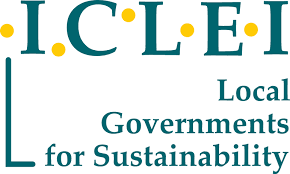Asia is home to over 60% of the global population and a significant share of the world’s smallholder farmers. It remains the backbone of local livelihoods, economic development, and food security for millions of these smallholder farmers across the region. However, agriculture is increasingly vulnerable to climate change, especially in developing countries, which are also situated in high-risk areas for most climate hazards. Even though agriculture contributes up to 30% of global GHG emissions, we should not put the burden on the small-scale farmers; instead, we should ask for the accountability of industrial agricultural corporations and other key players that negatively contribute to combating climate change and social injustices, resulting in different environmental and social impacts.
Therefore, transforming food systems is essential to achieving the Paris Agreement and limiting warming to 1.5°C. Food system needs to be transformed to improve food and nutritional security through sustainable agriculture such as agroecology, increase farmers’ self determination, boost equity and livelihoods, increase climate resilience for smallholder farmers, while also calling for actions from industrial agricultural firms in protecting and restoring nature, and help mitigate climate breakdown through more responsible operations. Food systems must be central in global climate negotiations due to its crucial role for adaptation for the most vulnerable small-scale farming communities, while also addressing the contributions to the carbon emissions from the industrial or corporate-level of agricultural production. Countries need to integrate climate-resilient and sustainable agroecological practices into their Nationally Determined Contributions (NDCs) and National Adaptation Plans (NAPs), and promote diversified, resilient farming systems that restore soil health to improve productivity and reduce food loss & waste. for the small-scale farming communities, while also reducing a substantial amount of emissions from industrial agriculture.
At COP 28 in Dubai, 160 countries endorsed the Declaration on Sustainable Agriculture, Resilient Food Systems and Climate Action, the Declaration on Climate and Health, an agreement that affirms that agriculture and food systems must urgently adapt and transform in order to respond to the imperatives of climate change.
In addition, at COP 29 in Baku, the conference emphasized the need for gender-responsive climate finance, calling for increased support for women farmers on the frontlines of climate impacts and ensuring their involvement in decision-making around climate funding, since they have critical roles in food systems, particularly in production, seed saving and nutrition.
Despite some agreements made during the recent COPs, the progress and financing climate actions in agri-fisheries and food systems still need more haste and urgency.
CLIMATE RESILIENCE, FOOD SOVEREIGNTY, AND SELF-DETERMINATION
- Enhancing community resilience and adaptive capacity, particularly through ecosystem restoration and promotion of climate-resilient, sustainable agriculture and strategic agroforestry practices to ensure food security and sovereignty, and promote the rights to healthy and culturally appropriate food produced from sustainable methods such as organic or agroecology principles and via traceability.
- Easy access to scientific and local climate information, including downscaled weather forecasts and robust early warning systems, and significant investment in capacity building for vulnerable farming communities, while improving water availability and irrigation, and increasing research and development such as on accessibility of heat-and drought-tolerant crop varieties to reduce losses and damages.
- The shift from siloed approaches to the integrated food system architecture at all levels – local to global. Strengthen local innovation for Food Systems, while also enhancing global and regional cooperation, knowledge sharing and capacity building.
- Prioritize Nature-Based Solutions (NBS) and Ecosystem Protection: Regenerate nature and protect ecosystems as fundamental to a sustainable future. This includes supporting regenerative and site-specific appropriate mangroves species to prevent soil erosion, filter water, and restore thriving ecosystems which would increase carbon sequestration. These NBS should not be false interventions that will not truly provide either increased capacity, protection, and true benefits to the community.
CORPORATE POWER, GREENWASHING, AND FALSE SOLUTIONS
- Ensure Equitable and Consultative Land Use: Stop unjust purchasing/land grabbing of farmlands for renewable energy facilities and ensure all such developments are preceded by thorough inclusive sectoral engagements to protect community land rights and welfare, and IP tradition. Each country should have a robust framework, policy, and effective implementation mechanisms to address this issue.
- Food Waste Reduction: Reduce food loss and waste, including fish waste that emits methane; manage potential risks along the food chain; ensure food safety guidelines are public and standards are enforced; and involve stakeholders and consumers.
- Advocate for Decentralized, Affordable, and Sustainable Agricultural Systems: Say “No to the promotion of industrial agriculture.” Instead, call for the decentralization of agricultural technologies and the development of local capacities to understand and access to technology.
- Undertaking systemic change in the farming input value chain away from corporate dominance in promoting harmful chemicals and hybrid seeds, while also designing farmer-benefiting subsidy programs that protect natural resources and mandating comprehensive studies and community consultations before any large-scale infrastructure development.
REPARATIONS, ACCOUNTABILITY, AND LOSS & DAMAGE
- Include Agriculture, Forestry, and Fisheries in the Fund for Responding to Loss and Damage (FRLD): The agri-fisheries sector, must be one of the priorities under FRLD. It is important to increase funding and establish an effective mechanism for its operationalization to ensure communities from the agri-fisheries sector are more consulted in the development of the fund’s framework. This includes securing practical financial solutions to addressing agricultural damages and losses of native species driven by climate change. In addition, an expanded but strategic constituency from the agri-fisheries and agroforestry sector shall be included in the sectors being engaged during the development of the funding mechanisms.
- Ensure Justice and Reparations for Agricultural Loss and Damage: It is essential to establish laws and policies that guarantee reparations for damages incurred by the agricultural sector. This also involves improving readiness (funding and mechanisms) and access to information on loss and damage, as well as providing government-paid agri-fisheries related insurance with appropriate coverage to protect livelihoods and preserve ecosystems, ultimately investing in resilience. This also includes inland fisheries, especially those that are near in the coastal areas, where the salinity level is increasing due to tidal floods, storm surges, and sea level rise.
- Increased efforts with SNLD to address the technical and capacity-building needs in the agri-fisheries sector. Through the Santiago Network on Loss and Damage (SNLD), as the technical consultative body, should also increase its efforts to address technical and capacity building needs in the agriculture sector in the context of Loss and Damage
- Ensure robust Accountability and Transparency in Monitoring, Reporting and Verification (MRV) processes for all interventions.
- Streamline and prioritize Community-led Climate Finance: Simplify funding conditions and shorten access processes for agricultural and climate funds, ensuring direct community access that bypasses intermediary organizations. We urge the establishment of special funding packages for community-based climate action, that will provide them incentive and encouragement to protect the environment and natural resources and adopt climate resilient livelihood initiatives. advocating for grants over loan-based funding to avoid new community obligations. Instead, implement context-appropriate management models that ensure accountability without creating debt.
RESOURCING JUSTICE AND CLIMATE FINANCE
- Advance the newly collective goal of mobilizing $300 billion per year by 2035 for climate-related financing, pledged at COP29. As civil society organizations (CSOs), we recognize this commitment as a critical milestone in securing the resources necessary for climate resilience, mitigation, and adaptation, particularly for communities most affected by climate change, including those in low-emission countries. In addition, we hope to see the Baku to Belem Roadmap implemented, specifically the plan to shift harmful subsidies to promote sustainable practices, enhance food system resilience, and ensure that climate finance reaches farmers, particularly small-scale producers, through initiatives such as concessional finance for sustainable investments.
- Explore Synergies with Multilateral Biodiversity Funding in Implementing Evidence-Based Solutions: Exploring other funding mechanisms, such as multilateral biodiversity funding to complement the resource mobilization of the Fund for Responding to Loss and Damage (FRLD).
- Streamline and prioritize Community-led Climate Finance: Simplify funding conditions and shorten access processes for agricultural and climate funds, ensuring direct community access that bypasses intermediary organizations. We urge the establishment of special funding packages for community-based climate action, which will provide them incentives and encouragement to protect the environment and natural resources and adopt climate-resilient livelihood initiatives. Advocating for grants over loan-based funding to avoid new community obligations. Instead, implement context-appropriate management models that ensure accountability without creating debt.
- Increase Accountable Financial Support for Agri-Food Systems: Provide greater financial support for agricultural and food systems, while enabling private-sector investment in climate interventions and direct support to vulnerable farming communities. Ensuring these financial mechanisms will never cause more harm in any form to the communities.
JUST AND EQUITABLE FOOD SYSTEMS TRANSITION
- Transition to Resilient and Low Carbon Agricultural Practices: Promote a just transition towards lower-emission, low-carbon agricultural practices, including agroecology, local markets or short-distance value chains, agroforestry, and climate-resilient agriculture.
- Encourage the adoption of innovative, non-destructive irrigation systems to reduce agricultural emissions and boost climate resilience. These transitions should not add further burden to vulnerable farming communities. Many cases of installing irrigation and flood control projects actually cause more flooding rather than limiting it.
- Land rights and customary IP practices in Natural Resource Management need to be respected through policy and law enforcement. Inappropriate acquisition of farming and forestry land through Economic Land Concession (ELC) for RE Facilities leads to land loss, land conversion, deforestation and depletion of biodiversity that are exacerbated by climate change.
FEMINIST AND INTERSECTIONAL GOOD GOVERNANCE
- Enforcing policy and legal reforms that directly enable community participation and adaptation actions, and strengthen institutional capacity within the food system and natural resource protection.
- Prioritize Pro-Poor, Safe, Inclusive and Locally Owned Innovation: Promote pro-poor, user-friendly innovation and technology in agriculture, ensuring an inclusive and just energy transition, while integrating and respecting local and indigenous knowledge and technology with larger-scale innovations, and ensuring that farmers own and have accessible control over the technology they use, rather than it being dominated by large corporations (e.g., making drone technology accessible to individual farmers).
- Enhance Institutional Capacity and Coordination: Strengthen institutional capacity and inter-sectoral coordination across all levels of government, private sector, and civil society organizations. This collaborative approach is vital for effective climate interventions.





 c/o Rice Watch Action Network
c/o Rice Watch Action Network